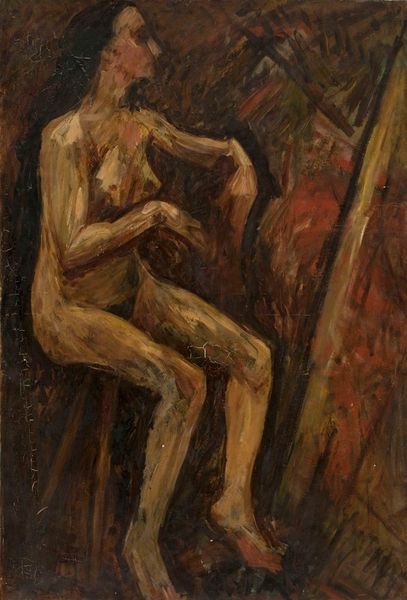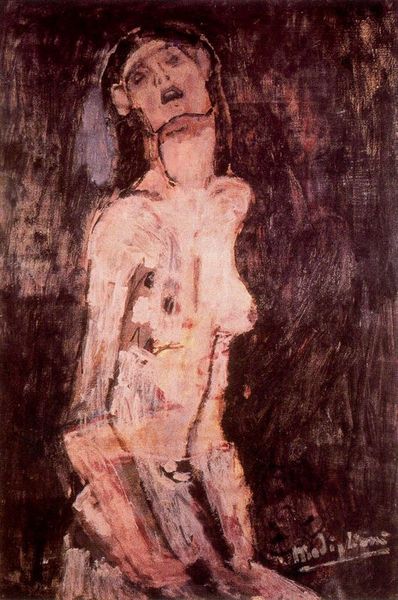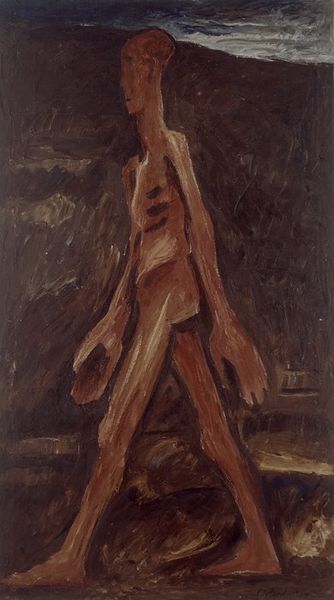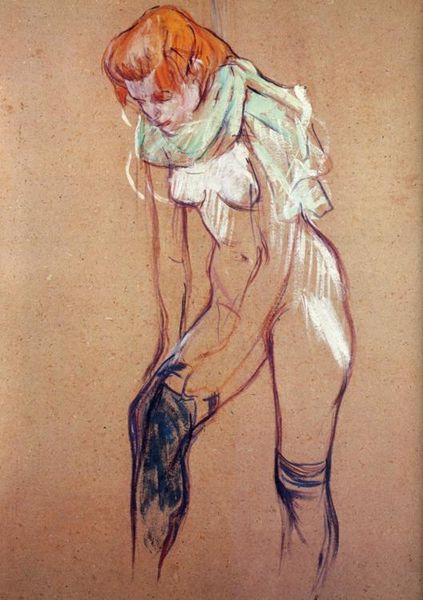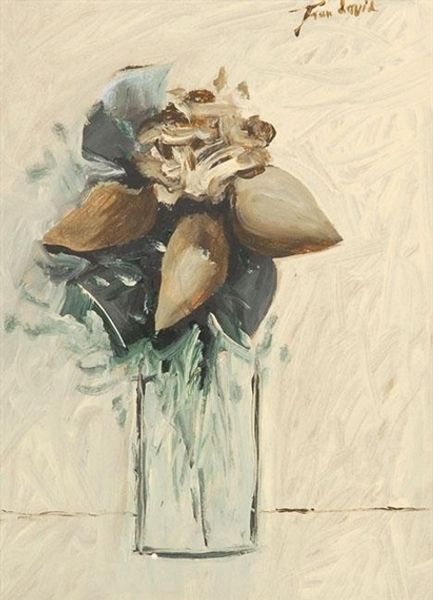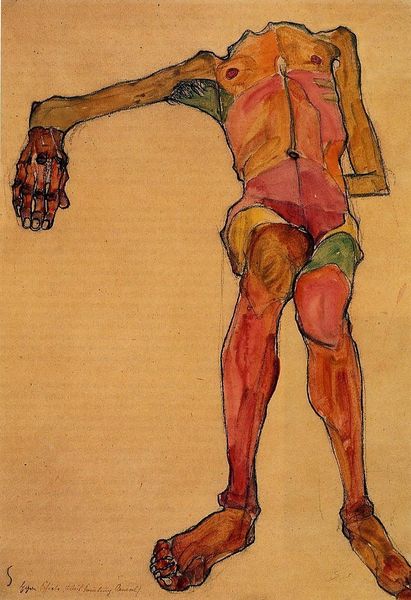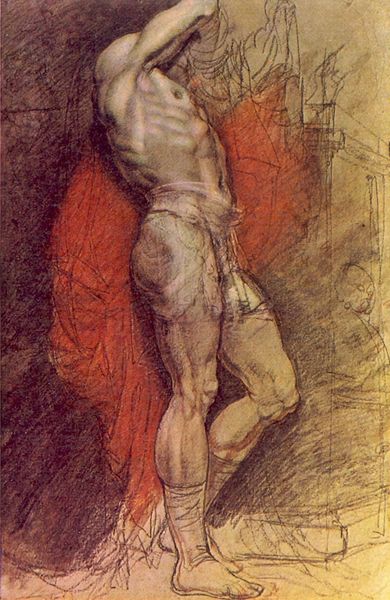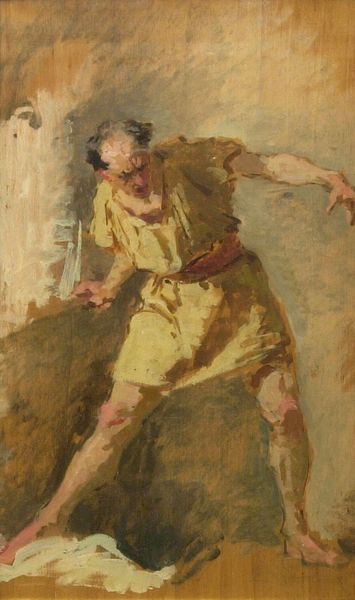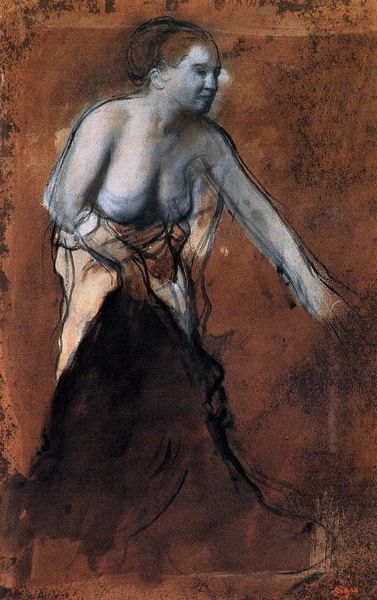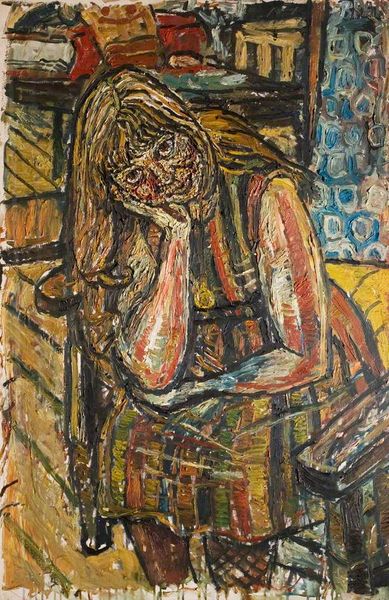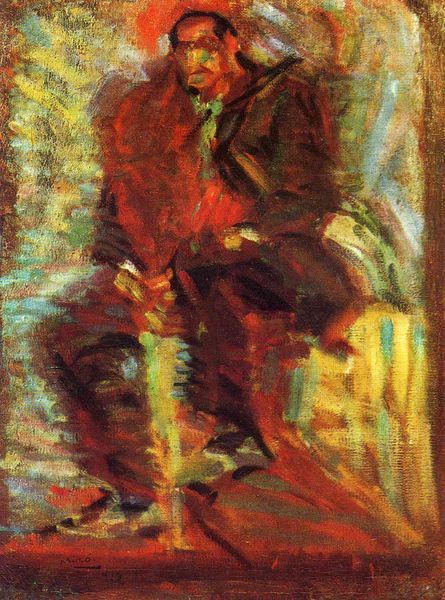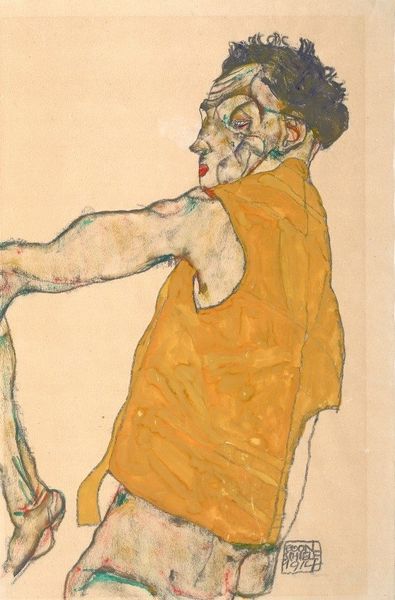
painting, oil-paint
#
portrait
#
figurative
#
painting
#
oil-paint
#
oil painting
#
genre-painting
#
portrait art
#
realism
Copyright: Public Domain: Artvee
Curator: Let’s take a look at this rather contemplative "Touchstone, The Jester," by John William Waterhouse. Editor: The first thing that strikes me is the melancholic mood. The color palette feels very muted, and this guy looks like he’s about to cry into his lute. What's his story? Curator: That’s an astute observation. Historically, the jester was often the only person in the royal court allowed to speak truth to power. Their comedic guise offered a unique platform for social commentary and criticism. Think of the Fool in King Lear. Editor: Oh, I like that, the burdened truth-teller behind the mask. It completely shifts how I see the work. What is interesting is that Waterhouse hasn't depicted him in performance, instead, we get a portrait that highlights isolation. I am curious about the use of oil paints as a medium. Curator: Well, it is worth noting how this oil on canvas plays into conventions and expectations, Waterhouse captures that weight. I think it makes him all the more compelling because the portrait is not romanticized, but realistic. Notice his tired expression, slumped posture, bare feet, almost as though Waterhouse wanted to humanize an often maligned character. Editor: Absolutely. And it makes me wonder about the dynamics of power, who holds it, who is perceived as foolish, and who speaks uncomfortable truths. This makes Waterhouse not just a storyteller but an agent provocateur. It feels oddly resonant today, doesn’t it? Curator: I agree entirely. It seems Waterhouse offers a layered commentary on identity, questioning the very nature of roles and representation within social hierarchies, particularly as they relate to marginalised voices. Editor: Hmm, art as a Trojan horse, carrying social critique and challenging the status quo! I feel enlightened. Curator: And Waterhouse reminds us, perhaps, of the subversive potential of laughter and the burden that comes with speaking truth.
Comments
No comments
Be the first to comment and join the conversation on the ultimate creative platform.
